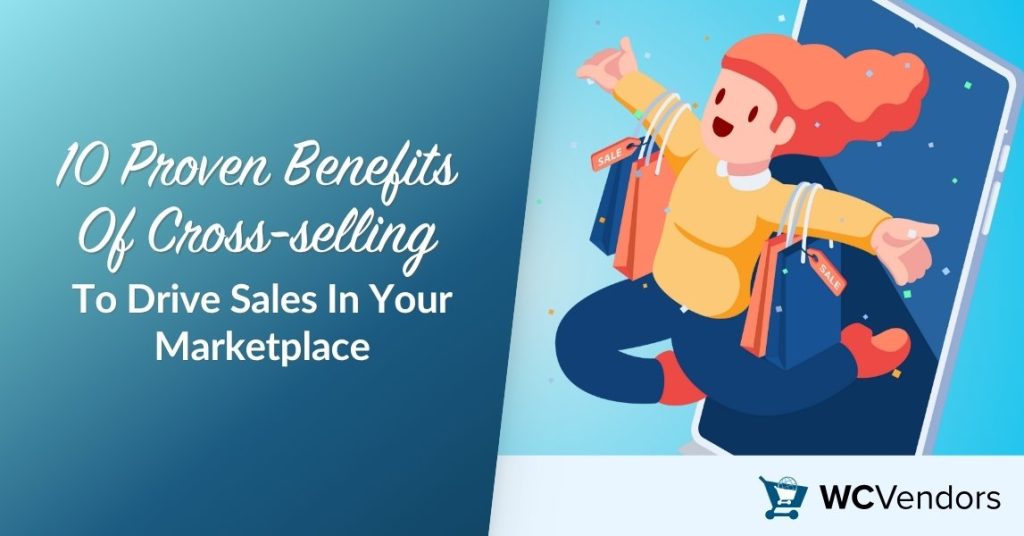
The benefits of cross-selling go far beyond just making a few extra sales. In fact, smart marketplaces consistently use cross-selling to increase average order value, improve customer loyalty, and drive long-term growth.
From what I’ve seen in WooCommerce stores, the sellers that succeed with cross-selling aren’t throwing random items into a cart. They’re using product relationships to guide customers toward smarter decisions.
And the good news? The process is not complicated. Cross-selling works best when you recommend the right item at the right moment — during product discovery, checkout, or even after purchase.
What Is Cross-Selling And Why Does It Matter?
It’s easy to confuse cross-selling with upselling, but there’s an important distinction:
- Cross-selling means recommending related products that complement the original purchase. These items are typically lower in price and serve as add-ons or companions to the main product. For example, if a customer buys a smartphone, you might suggest phone cases, chargers, or headphones.
- Upselling, on the other hand, encourages purchasing a higher-end version of the same product, such as upgrading to a Pro model of the phone.
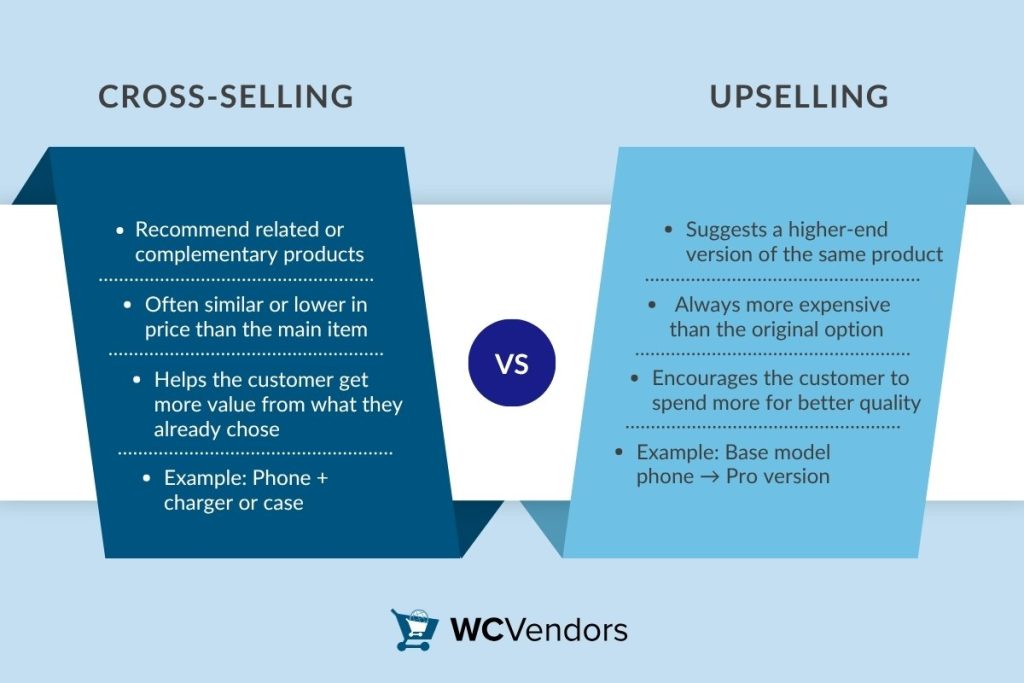
The benefits of cross-selling extend beyond just increasing sales. When done properly, cross-selling creates a more personalized shopping experience, which helps build customer relationships and improve long-term loyalty.
According to Gitnux, companies that use both cross-selling and upselling effectively are often 30% more profitable than those that don’t. That’s a strong case for treating these as separate but equally important strategies.
For more on upselling strategies, check out The Top 10 Proven Benefits of Upselling.
What Are The Benefits Of Cross-selling?
While most sellers focus on attracting buyers, the real growth happens when you maximize every customer’s visit through strategic cross-selling. These 10 proven benefits show why it’s a game-changer for WooCommerce marketplaces:
1. Increases Average Order Value (AOV) consistently
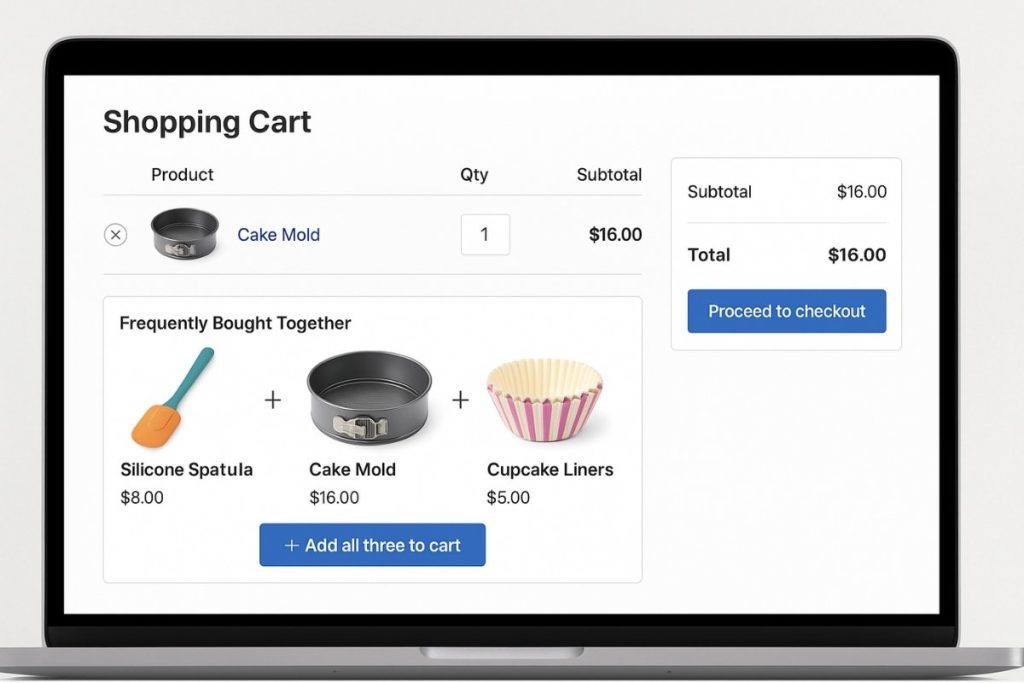
The most direct benefit of cross-selling is that it increases the amount each customer spends. When suggestions are relevant, shoppers are more likely to add items without feeling pressured.
According to McKinsey, businesses using cross-selling strategies often see a 20 to 30% rise in average order value. A notable example is Amazon, where 35% of revenue comes from cross-selling, driven by features like “Frequently Bought Together” and “Customers Who Bought This Also Bought” (McKinsey, via Gitnux).
I’ve seen smaller marketplaces take a similar approach by offering targeted bundles. Some of our WC Vendors users have shared that pairing low-cost, related items with a main product helps increase their average order without needing more traffic.
It’s often the simplest product pairings — like cupcake liners and spatulas with a baking mold — that end up having the biggest impact.
2. Builds stronger customer relationships over time
Cross-selling, when applied thoughtfully, serves as a form of personalized guidance. It allows vendors to anticipate what a customer might need next based on their current purchase, which can make the shopping experience feel more intuitive and less transactional.
For instance, a WC Vendors store offering hobby kits started recommending add-on tools and refills. Instead of making customers search separately, they made it easier to complete their projects. These helpful touches increased trust and made customers more likely to return.
What stands out is how cross-selling becomes more than a sales tactic. It signals care and attention to detail. Over time, that contributes to stronger customer relationships and long-term loyalty.
3. Supports a better customer journey
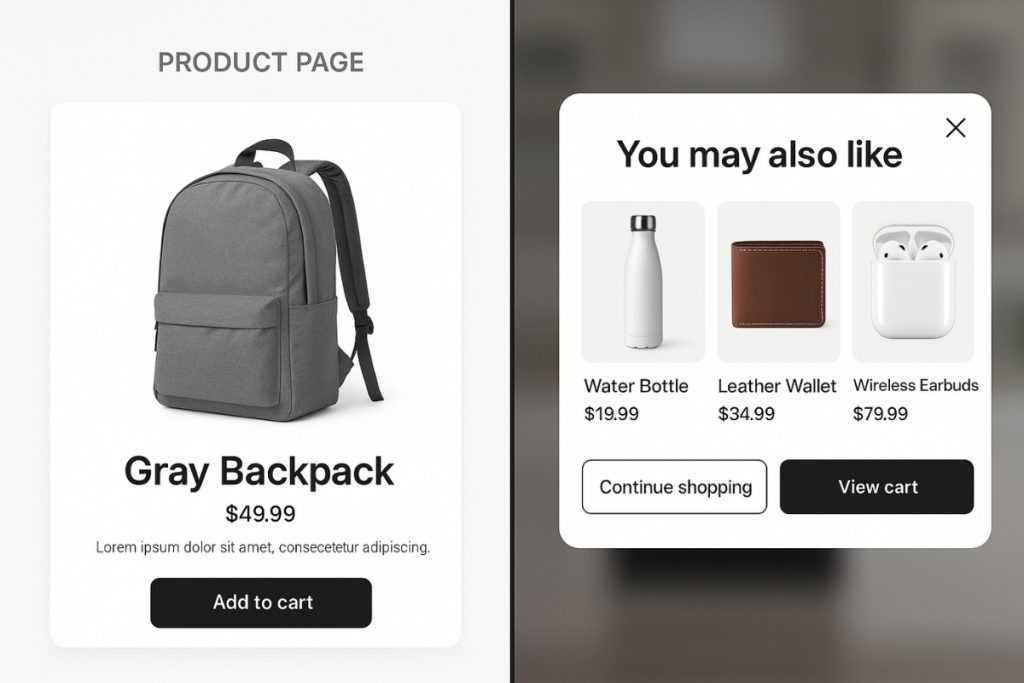
Cross-selling contributes to a more structured and thoughtful customer journey by guiding shoppers toward relevant add-ons at key points. It helps reduce friction by presenting helpful options exactly when they’re most useful. The goal is to add value without interrupting decision-making.
For example, if someone buys a set of dumbbells, suggesting a workout guide or yoga mat right before checkout makes sense. The timing matters.
According to a Segment and McKinsey report, customers who receive relevant product suggestions at different stages of the journey are more satisfied overall. They’re also more likely to return to that same seller.
When suggestions are placed thoughtfully — like on product pages or confirmation emails — they become part of a more natural buying process.
4. Improves customer loyalty without discounts
Offering value, not just price cuts, is a proven way to build customer loyalty. Cross-selling is one of the simplest methods to do that.
I have seen some WC Vendors users selling outdoor gear have taken this approach by bundling beginner-friendly items into starter kits. Rather than relying on promotions, they focused on anticipating what someone new to the activity might need. That shift has led to stronger reviews and better long-term engagement.
According to Gitnux, 80% of shoppers say a personalized experience makes them more likely to shop again. Thoughtful cross-selling delivers exactly that.
5. Helps clear out slow-moving inventory

Cross-selling can be an effective strategy for moving products with low standalone demand. When certain items consistently underperform, pairing them with high-traffic or high-conversion products increases their visibility and relevance.
I saw this firsthand in a marketplace selling home decor. Decorative vases sat unsold for months. When bundled with their best-selling dried flowers, the vases finally moved. They didn’t even need a discount. The pairing simply gave the product a better context.
This strategy not only clears space but also reinforces the practical benefits of cross-selling for inventory management.
6. Reveals what customers actually want
Cross-selling creates a feedback loop that helps vendors learn more about customer preferences. By tracking which product combinations get clicks or conversions, patterns start to emerge — even ones you wouldn’t predict at the start. Over time, this data shows which items naturally go together and which suggestions fall flat.
For example, a woodworking vendor noticed customers buying sanding tools with furniture paint kits. They created new bundles and saw more purchases, along with better reviews.
Cross-selling becomes a way to listen to customers without having to ask directly, and one of the lesser-discussed benefits of cross-selling is how much it can inform future planning.
7. Increases customer lifetime value
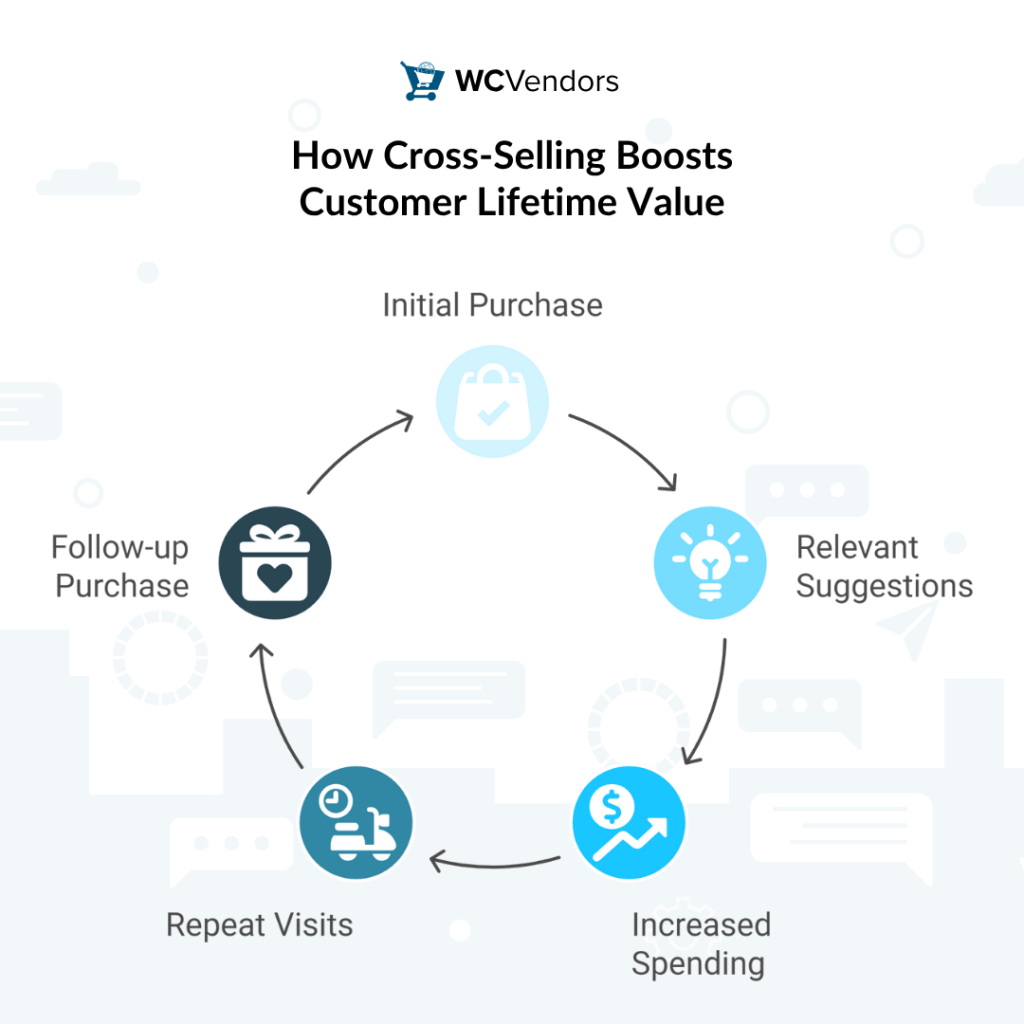
Customer lifetime value is the total revenue you earn from a customer over the long run. Cross-selling helps increase this by encouraging follow-up purchases and building a habit of shopping in your marketplace.
Customers exposed to relevant product suggestions spend more over time. They also visit again sooner.
If a customer bought a planner, for example, a follow-up email offering matching stickers or pens a week later might lead to another purchase. These small interactions add up, and that’s one of the most consistent benefits of cross-selling over the customer lifecycle.
8. Works across product types
The flexibility across physical and digital inventory is one of the more underrated benefits of cross-selling. The main principle stays the same: identify products that naturally go together, then position them where they make sense in the buying process.
For digital sellers, this could mean offering add-ons, upgrades, or companion files that improve the overall value of the purchase.
A design marketplace I follow started offering font bundles alongside logo templates. Because the fonts matched the style of the templates, customers didn’t need to search for compatible options. They started suggesting downloadable reading material at checkout. Many students added it to their order, since it felt like a helpful extension of the main purchase.
The key is pairing items that improve the usefulness or enjoyment of the original product.
9. Makes email marketing more effective
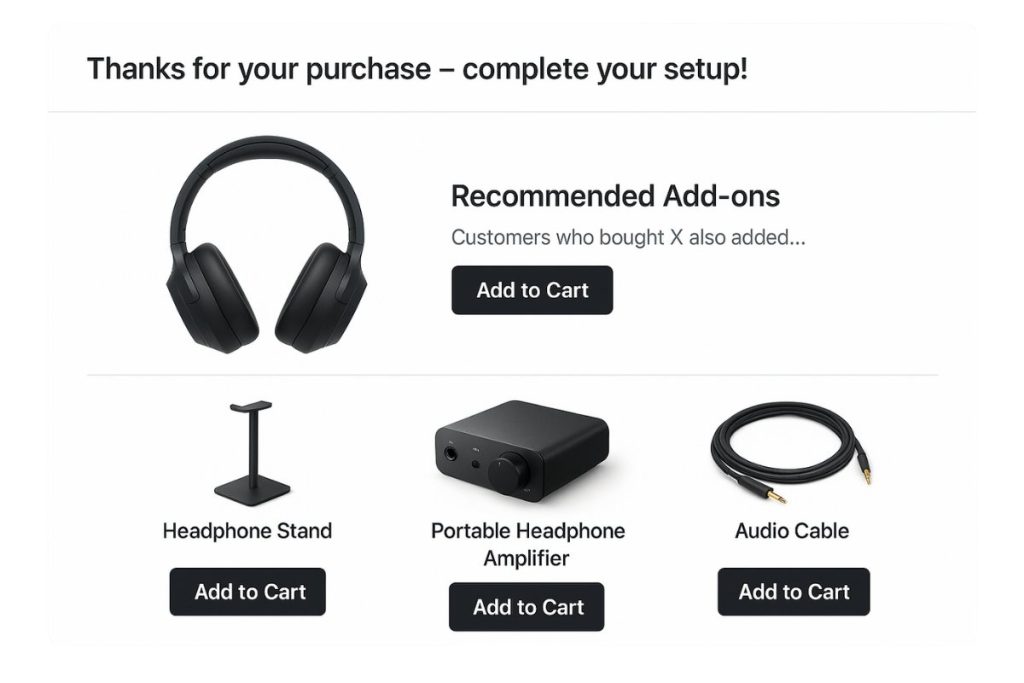
Adding cross-selling strategies to your email marketing efforts not only increases relevance. It also reinforces the long-term benefits of cross-selling across different customer touchpoints.
A generic order confirmation doesn’t do much. But a confirmation that suggests useful accessories can drive post-purchase sales.
According to Gartner, cross-sell follow-ups via SMS and email can reach 45% response rates. While every industry varies, the common thread is relevance. The more aligned your suggestions are with the original purchase, the more likely customers are to click.
10. Helps sales professionals and vendors perform better
For vendors on WC Vendors or similar platforms, cross-selling provides structure and visibility.
Instead of uploading dozens of isolated items, sellers can group their listings into logical combinations. A maker of handmade candles, for instance, might create care kits that include a candle, wick trimmer, and safety guide. This raises the perceived value and simplifies the buying decision.
How WC Vendors Supports Cross-Selling At The Marketplace Level
WC Vendors is built to support effective cross-selling. The platform gives marketplace owners and vendors simple tools to add cross-selling and upselling options without extra plugins.
Admins can enable permissions that let vendors manage product suggestions directly from their dashboard, making it easier to apply strategies across all stores.
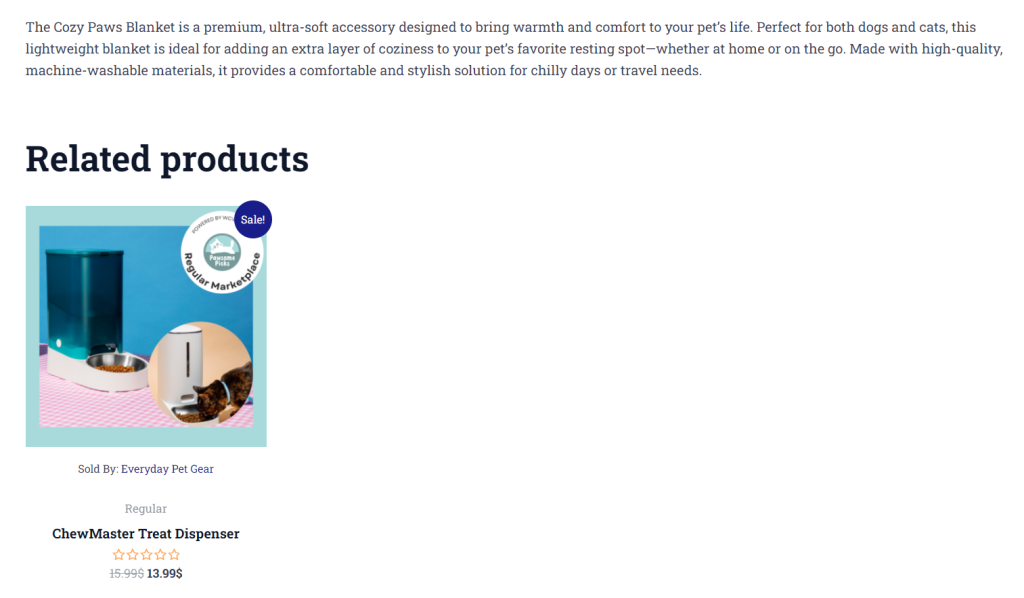
- How vendors add cross-sells in WC Vendors:
- Go to Products in the vendor dashboard
- Add or edit a product
- Scroll to Linked Products
- Add upsells (product upgrades)
- Add cross-sells (related items)
- Click Submit
Once saved, these suggestions appear on product pages. It’s a quick way for vendors to recommend helpful add-ons based on what customers are already buying!
Conclusion
The benefits of cross-selling are not just about squeezing in more revenue. They’re about helping your customer buy smarter. Marketplaces that offer thoughtful, helpful product suggestions outperform those that treat each sale in isolation.
Here’s a recap of the benefits of cross-selling:
- Increases average order value consistently
- Builds stronger customer relationships over time
- Supports a better customer journey
- Improves customer loyalty without relying on discounts
- Helps clear out slow-moving inventory
- Reveals what customers actually want
- Increases customer lifetime value
- Works across product types
- Makes email marketing more effective
- Helps sales professionals and vendors perform better
When applied with care, these small tactics create a better experience for both customers and vendors. The best part is, it doesn’t take a full overhaul to get started.
If you’d like to see how WC Vendors makes cross-selling easier across your entire marketplace, view our pricing plans or explore our live demo.
Frequently Asked Questions About Cross-Selling
What are some common mistakes in cross-selling strategies?
Poor timing, irrelevant product pairings, and overwhelming the buyer are some of the most common cross-selling mistakes that reduce effectiveness.
Cross-selling works best when suggestions are helpful, timely, and limited to a few carefully chosen related products. A frequent mistake is recommending too many unrelated add-ons, which clutters the shopping experience and causes buyer fatigue. Others include pushing high-ticket items too late in the customer journey or failing to match cross-sells to the buyer’s actual intent.
How is cross-selling different in eCommerce vs. physical retail?
In eCommerce, cross-selling uses data and automation to recommend products, while in physical retail, it relies on in-person sales tactics and visual merchandising.
Digital platforms offer more precise targeting through algorithms and behavioral data. For example, WooCommerce marketplaces can display cross-sell offers dynamically on product pages, in carts, or emails. Physical stores, on the other hand, often depend on staff recommendations or product placement near checkouts. Both approaches aim to increase average order value, but eCommerce allows for more consistent testing and tracking of cross-selling performance.
Should cross-selling be used on every product page?
No. Cross-selling is most effective when used selectively on products with high intent, complementary items, or repeat purchase potential.
Not every product benefits from cross-selling equally. For example, simple or one-off purchases may not need suggestions, while high-volume or consumable items often do. Adding too many product suggestions can overwhelm users and hurt conversion rates. Instead, cross-selling strategies should be applied to your top 20% performing items or categories with strong related product logic.
Is cross-selling more effective before or after checkout?
Both can work, but post-checkout cross-selling often leads to higher conversions because there’s no purchase barrier left.
Pre-checkout suggestions help increase cart value, while post-purchase offers feel more like helpful recommendations than sales pressure.
Can cross-selling and upselling be used together in one sales funnel?
Yes. Combining upselling and cross-selling strategies in a single funnel increases average order value and improves relevance.
For example, a customer might be shown a premium version of a product (upsell) on the product page, then offered accessories or add-ons (cross-sell) at checkout. The key is placement. According to Shopify, stores that layer upsell and cross-sell suggestions in stages — not simultaneously — see a 10–15% lift in AOV compared to those that use one tactic alone.
